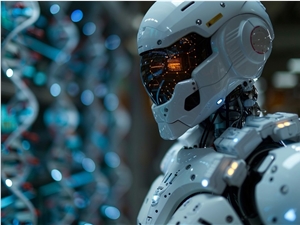In the world of artificial intelligence, every breakthrough is accompanied by astonishing data. Imagine 16,384 GPUs operating simultaneously—this isn't a scene from a sci-fi movie, but a real-life depiction of Meta's latest Llama3.1 model training. However, behind this technological feast lies an average failure rate of once every three hours. This staggering figure not only showcases the speed of AI development but also exposes the significant challenges faced by current technology.
From the 2028 GPUs used in Llama1 to the 16,384 in Llama3.1, this leap is more than just a quantitative change; it's a severe test of the stability of existing supercomputing systems. Meta's research data shows that during the 54-day training cycle of Llama3.1, there were 419 unexpected component failures, about half of which were related to the H100 GPU and its HBM3 memory. This data forces us to ponder: while pursuing breakthroughs in AI performance, has the reliability of the system also improved in tandem?

In fact, there's an undeniable truth in the supercomputing field: the larger the scale, the harder it is to avoid failures. Meta's Llama3.1 training cluster consists of thousands of processors, hundreds of thousands of other chips, and hundreds of miles of cables, with a complexity comparable to that of a small city's neural network. In such a colossal system, failures seem to be the norm.
Faced with frequent failures, the Meta team did not stand idly by. They implemented a series of countermeasures: reducing job startup and checkpoint times, developing proprietary diagnostic tools, and utilizing PyTorch's NCCL flight recorder, among others. These measures not only enhanced the system's fault tolerance but also improved its automated processing capabilities. Meta's engineers are like modern-day "firefighters," always ready to extinguish any "fires" that might affect the training process.
However, the challenges are not just from the hardware itself. Environmental factors and power fluctuations also pose unexpected tests for the supercomputing cluster. The Meta team found that the diurnal temperature changes and drastic fluctuations in GPU power consumption significantly impact training performance. This finding reminds us of the importance of environmental and energy management while pursuing technological breakthroughs.
The training process of Llama3.1 is a severe test of the stability and reliability of supercomputing systems. The strategies adopted by the Meta team and the automated tools they developed provide valuable experience and insights for the entire AI industry. Despite the difficulties, we have reason to believe that with continuous technological advancements, future supercomputing systems will be more powerful and stable.
In this era of rapid AI development, Meta's endeavor is undoubtedly a bold adventure. It not only pushes the boundaries of AI model performance but also showcases the real challenges faced in the pursuit of the extreme. Let's look forward to the limitless possibilities brought by AI technology, and also give a thumbs up to those engineers who strive tirelessly at the forefront of technology. Every attempt, every failure, and every breakthrough of theirs paves the way for human technological progress.
Reference:
https://www.tomshardware.com/tech-industry/artificial-intelligence/faulty-nvidia-h100-gpus-and-hbm3-memory-caused-half-of-the-failures-during-llama-3-training-one-failure-every-three-hours-for-metas-16384-gpu-training-cluster










